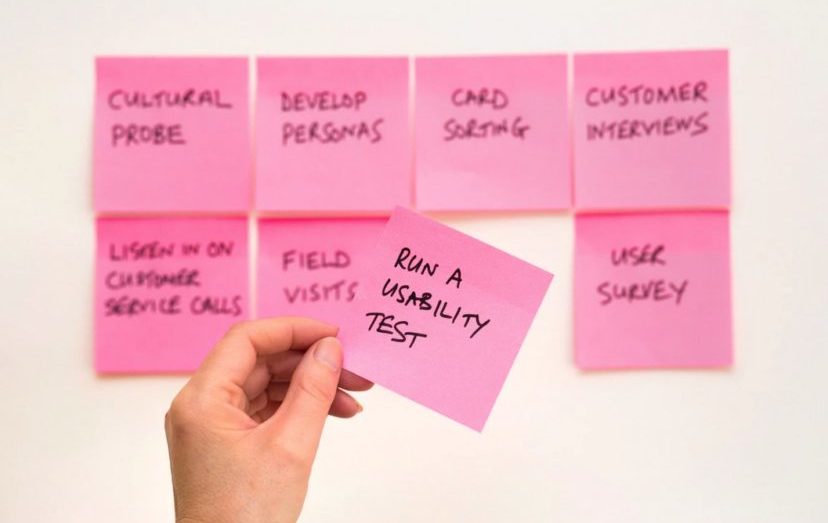So, you have a great idea for a new product or service. But how do you know if it will be successful for business? Two words – market research. As a business owner, market research is one of the most important things that can help determine your success.
Who is your target audience? How much demand is there in the market for your product or service? What needs does your business fulfill and what problems does it resolve? These are the types of questions that market research helps answer.
By taking the time to understand the playing field, you’ll have greater insight on competition, audience insights and even how much to charge customers.
That’s because market research is all about obtaining the knowledge needed to make informed business decisions. In this article, we’ll be discussing what market research is and how to properly conduct it.
What is Market Research and Why is it Important?
By definition, market research is an approach to gather information about consumer needs as it relates to products or services to be offered for sale. Market research should give you information about three key areas including:
- The Consumer
- Competition
- The industry as whole
These key areas are important in market research because they help determine whether what you’re selling will actually sell in the real world. In addition, market research is going to help you to better understand what the competition is doing.
By gaining insights on competitive practices, you can better differentiate your own business with an approach that your potential customers find appealing. In marketing, we call this a unique selling proposition (USP).
However, sometimes business owners are reluctant to conduct research, usually because they aren’t interested in hearing any negative feedback. But it’s good to get feedback. That way you know what improvements need to be made in order to improve sales.
It goes without saying, conducting good market research takes time and the gathering of a lot of information. But by gathering all of this data, you’ll be able to better formulate a marketing plan that is well researched and likely to succeed.
Understandably, many business owners simply don’t have the needed time to invest in conducting studies and focus groups to obtain all of this data. For this reason, we’ll go over a few ways that market research can be more easily conducted to get the information you need.
Deciding Between Primary and Secondary Research Methods
When conducting market research of any sort, you’re going to rely on one or both of the two methods. Primary research and secondary research.
- Primary Research is information that you get directly from the source, such as a customer.
- Secondary Research is data that you get from other sources such as reports, statistics or articles that you read online.
More often than not, the majority of market research is secondary. The reason is that it’s more easily accessible and often doesn’t cost anything, except time. With primary research, you’ll either be conducting surveys or holding focus groups to gather insights on products and services. Often the people taking part in your primary research will need to be compensated for their time.
With that being said, while secondary research may seem like the sure way to go for most businesses, it’s really a good idea to try to include at least some primary sources in your research as well. This way you ensure that you’re getting a fuller picture on the information you need.
So, to get you up and running, here are 4 steps to follow when conducting market research.
How to Conduct Market Research in 4 Steps
By following a set of procedures in your market research, you’ll gather the information you need on your audience and competition in a more timely-efficient manner. From determining your target audience, to compiling and summarizing data, here are the steps we recommend.
Time needed: 7 days
How to do Market Research
- Define Your Target Audience
The very first thing you’ll want to do in conducting your research is to identify your target audience. Who are your customers? How old are they? Where are they located? Being able to answer these questions is important in order to efficiently do your research.
For instance, it wouldn’t make sense to send out a survey to someone you know is not your ideal customer. You want to ensure that your research efforts are directed toward people most likely to engage with your business.
To define your target, you’ll want to create buyer personas. Creating two or three different personas can help you identify the type of person that your business, service or product can benefit.
Consider identifying the following when creating a buyer persona:
– What is their age?
– Where are they located geographically?
– What is their income level?
– What type of education do they have?
– Where do they work?
– What are they interested in?
When completing this exercise, you’ll have a more accurate depiction of who your ideal customer is. For additional information on defining your target market, see our article on the topic here.
- Evaluate the Competition
Taking a good look at your competitors is going to give you a glimpse into what the other guys are doing. It’s also going to give you a better picture of the competitive landscape for your industry.
As part of your competitive market research, you should get an understanding of what your competitors are offering. What is it that makes them different? Is there something about how they run their business that you could do better? How much do they charge for their product or service?
Having a solid understanding of your direct and indirect competitors is a way to better appeal to your own target audience.
By studying and evaluating your competitors, you’ll discover insights such as:
– The difference between your own company and theirs
– How much you should charge for your product or service
– The type of offers they provide their customers
– The type of advertising and marketing efforts they are doing
– How they communicate with customers
– What is selling well and why
– What is not selling well and why
Properly evaluating the competition will not only help you avoid pitfalls in your own business, but it can spark new ideas that could work well for you.
In addition, taking a look at how they advertise can provide insight on how you might advertise your company. Are they advertising on Facebook, Google? Or do they focus more on email marketing? Check out their company website and social media pages. You’ll be surprised just how much you can learn from looking at your competitors.
- Communicate With Your Audience
Now that you have a better understanding or your target audience and your competitors, it’s now time to communicate with your customers. Ask questions about what they like or dislike about what you’re selling. Being open to feedback is one of the best ways to understand how to improve your business. It can also let you know whether there is something else that you should offer your customers that you aren’t currently.
At this point, it’s all about digging deeper. By now, you’ve conducted secondary research, but when you engage with your customers, you are performing primary research.
A good way to get feedback is to send your customers a survey. Ask them if they are willing to take one and that you’re looking for honest feedback. You can easily send out surveys with a software such as SurveyMonkey.
In addition to sending out surveys to your existing customers, you can also conduct a focus group. A focus group is where a group of people who are not currently connected to your business are gathered to discuss a particular product or service. Usually, a moderator will lead the discussion and ask the group questions about their opinions about a product. They might also ask the group what they like or dislike about it, or how a particular product makes them feel.
While focus groups tend to be more costly, they are a great way to gather insights from potential customers that you may never have thought of otherwise. Using a company that specializes in market research is a good way to help conduct your focus group. You can then evaluate responses from the group to gather additional insights as to what your customers want and if there is enough demand to move forward with an idea that you have.
- Gather and Summarize the Data
The last thing you’ll want to do is gather all of your data and then summarize it. At this point, you’re going to have a lot of information. But your primary goal here is to organize it in a way that makes sense, while offering insights to each of the personas that you’ve developed.
In summarizing your data, consider using the following points to help write up a clearly defined summary of your market research:
– Goals. What were you hoping to accomplish with your study?
– Sources. Who did you speak with in your primary research and what secondary sources did your research?
– An Executive Summary. Overall, what did you learn in your research? What are the takeaways and how will the research be used in decision making?
– Themes. Out of all of the research conducted, what are some common denominators you came across?
– Decisions. What is the buying process for your customers and what did you learn about how they make decisions?
– A Plan of Action. What’s next? This should include a list of actionable steps and when they will take place. Additionally, include a forecast of how your action plan will affect business.
Final Thoughts
There is no doubt that market research is one of the first things you should do when starting a new campaign or taking on a new marketing initiative. It’s important to first understand your target audience, and then how your business decisions will impact them.
Above all, you want to ensure that you are not only benefiting your business, but your customers as well. When done properly, market research can lead to a world of marketing opportunities that would have otherwise gone undiscovered.


Leave a Reply
You must be logged in to post a comment.